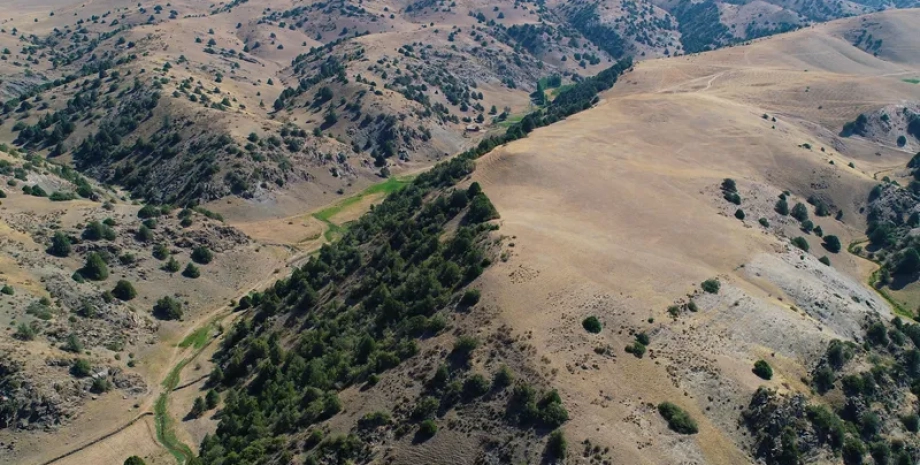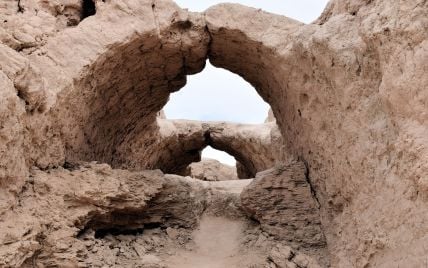Fri 25 October 2024:
In the remote mountains of Uzbekistan, archaeologists have uncovered two long-lost cities that once flourished along the ancient Silk Road trade route. Using cutting-edge laser-based remote sensing technology, these discoveries shed light on two thriving urban centers from the 6th to 11th centuries AD. One city, Tugunbulak, was a hub for the metal industry, while the smaller Tashbulak offers early evidence of Islamic influence.

Photo: Michael Frachetti | As this drone shot shows, Tugunbulak doesn’t look like a promising place to live, but looks can be deceiving.
Two Fortified Cities Hidden in the Highlands
Situated at altitudes of 6,560 to 7,220 feet (2,000-2,200 meters) and just three miles apart, these cities are among the largest ever found in the high-altitude regions of the Silk Road. “These cities were completely unknown,” said lead archaeologist Michael Frachetti from Washington University in Saint Louis. His team is now delving into historical records to understand their significance further.
Traces of lost cities of the Silk Road found in Uzbekistan / Photo: pixabay.com
Tugunbulak: A Center of Industry and Power
Tugunbulak, the larger of the two, spanned an impressive 300 acres, possibly housing tens of thousands of people. Active from around 550 to 1000 AD, it rivaled the famed Silk Road city of Samarkand, just 70 miles away. The city’s fortifications and industrial activities make it stand out. Excavations uncovered kilns and furnaces, suggesting Tugunbulak was a major production site for steel, a key commodity in the region during the 9th and 10th centuries.
“Tugunbulak complicates our understanding of the early medieval Silk Road economy,” noted Frachetti, pointing out that this industrial powerhouse was far from traditional economic centers.
__________________________________________________________________________

https://whatsapp.com/channel/0029VaAtNxX8fewmiFmN7N22
__________________________________________________________________________
Tashbulak: A Cultural Crossroad
While much smaller, Tashbulak had its own cultural significance. This city, inhabited between 730-1050 AD, boasts an expansive cemetery with 400 graves—one of the earliest known Muslim burial sites in Central Asia. “There’s definitely something ideologically oriented around Tashbulak,” Frachetti said, referring to its large burial site compared to the town’s small size.
High-Altitude Wonders of the Silk Road
The discovery of these cities, perched at elevations comparable to the Inca citadel Machu Picchu, highlights the diversity of settlements along the Silk Road. The trade route not only moved goods like silk and spices but also fostered the exchange of ideas, religion, and culture between East and West. The existence of such high-altitude fortified cities challenges historical assumptions about the political and economic landscape of the Silk Road.
“The key finding of this study is the existence of large, fortified and planned cities at high elevation,” Frachetti concluded, emphasizing the extraordinary nature of these cities in ancient times.
SOURCE: INDEPENDENT PRESS AND NEWS AGENCIES
______________________________________________________________
FOLLOW INDEPENDENT PRESS:
WhatsApp CHANNEL
https://whatsapp.com/channel/0029VaAtNxX8fewmiFmN7N22
![]()
TWITTER (CLICK HERE)
https://twitter.com/IpIndependent
FACEBOOK (CLICK HERE)
https://web.facebook.com/ipindependent
YOUTUBE (CLICK HERE)
https://www.youtube.com/@ipindependent
Think your friends would be interested? Share this story!






